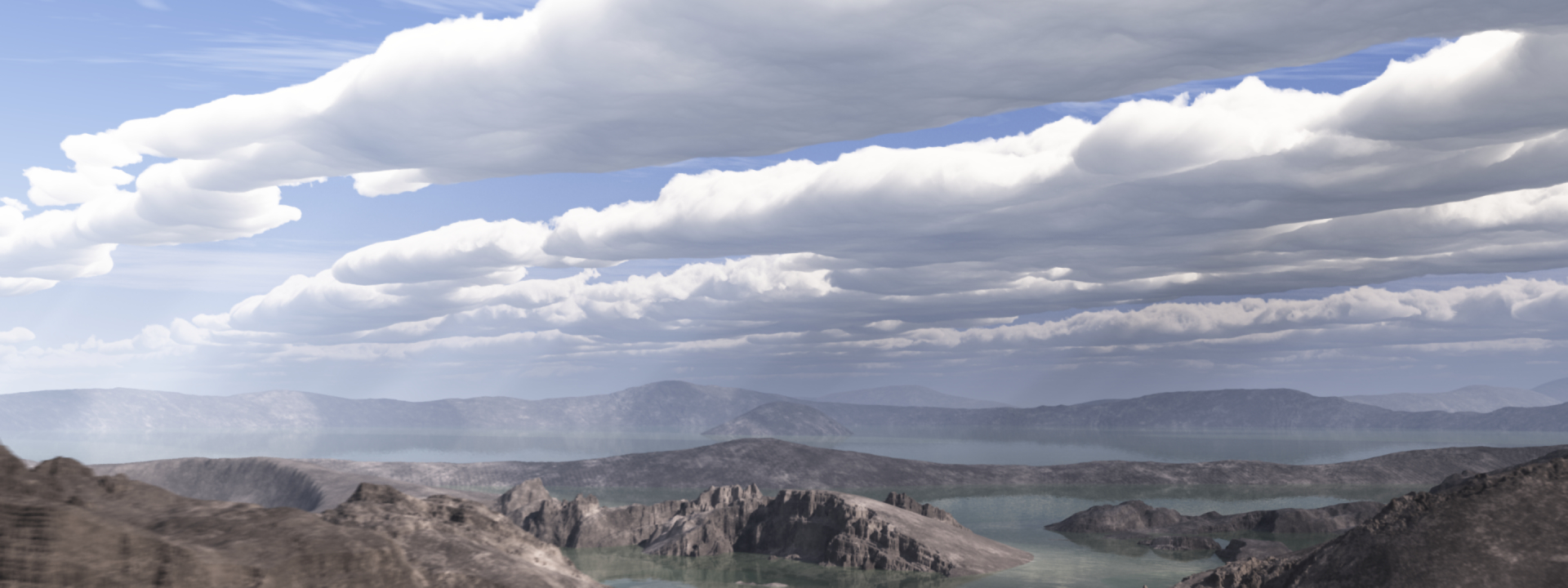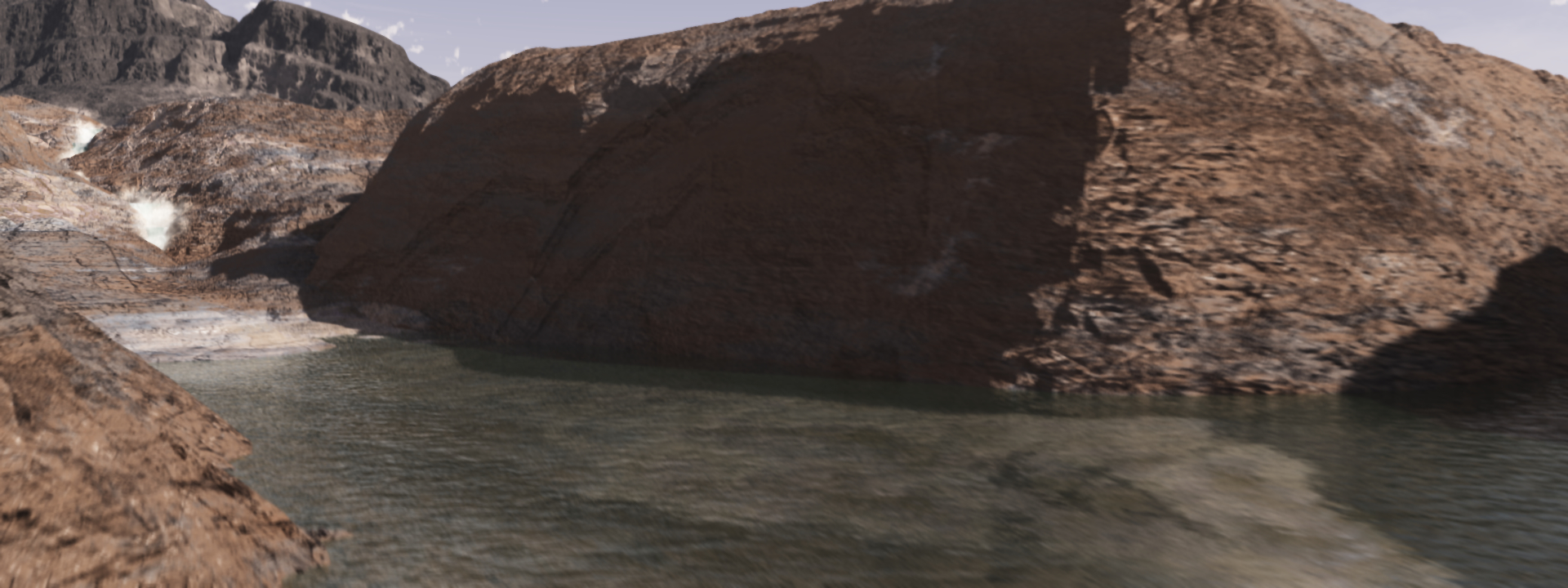NASA has prepared a new video to illustrate its Mars Atmosphere and Volatile Evolution (MAVEN) mission’s investigation of dramatic climate change on Mars. Today, Mars is a cold and barren desert world, with no sign of life, at least on the surface. However, billions of years ago when the Red Planet was young, it appears to have had a thick atmosphere that was warm enough to support oceans of liquid water – a critical ingredient for life.
Credits: Michael Lentz/NASA Goddard Conceptual Image Lab Download video
Liquid water cannot exist pervasively on the Martian surface today due to the low atmospheric pressure and surface temperature, although there is evidence for spurts of liquid flow that perhaps consist of a briny solution with reduced freezing temperature, according to Joseph Grebowsky of NASA’s Goddard Space Flight Center in Greenbelt, Md. Water under current Martian atmospheric conditions can be ice or sublimate directly into vapor without staying in a liquid phase. Grebowsky is the project scientist for the mission.
The video shows how the surface of Mars might have appeared during this ancient clement period, beginning with a flyover of a Martian lake. The artist’s concept is based on evidence that Mars was once very different.
Surface features and mineral compositions suggest ancient Mars had a denser atmosphere and liquid water on its surface, according to Grebowsky. “There are characteristic dendritic structured channels that, like on Earth, are consistent with surface erosion by water flows. The interiors of some impact craters have basins suggesting crater lakes, with many showing connecting channels consistent with water flows into and out of the crater. Small impact craters have been removed with time and larger craters show signs of erosion by water before 3.7 billion years ago. And sedimentary layering is seen on valley walls. Minerals are present on the surface that can only be produced in the presence of liquid water, e.g., hematite and clays,” said Grebowsky.
Estimates of the amount of water needed to explain these features have been made that equated to possibly as much as a planet-wide layer one-half a kilometer (1,640 feet) deep or more, according to Grebowsky. If liquid surface water existed in the past, then Mars’ atmosphere had to have had a different climate that was warmer and a pressure near or greater than the current terrestrial atmospheric pressure at the surface.
In the video, rapidly moving clouds are employed to suggest the passage of time, and the shift from a warm and wet to a cold and dry climate is shown as the video progresses. The lakes dry up and freeze over, while the atmosphere gradually transitions from Earthlike blue skies to the dusty pink and tan hues seen on Mars today.
It’s unknown if the habitable climate lasted long enough for life to emerge on Mars. “The only direct evidence for life early in the history of a planet’s evolution is that on Earth,” said Grebowsky. “The earliest evidence for terrestrial life is the organic chemical structure of a rock found on the surface in Greenland. The surface was thought to be from an ancient sea floor sediment. The age of the rock was estimated to be 3.8 billion years, 700 million years from the Earth’s creation. No fossil evidence of life has yet been found from this period. The oldest claimed micro-fossils (found in Western Australia) date to 3.5 billion years ago. The existence of a potential life-nurturing climate on Mars ended near these times. A comparison between the two planet’s life histories must be done with caution, due to the different chemical compositions of the surfaces (e.g., Mars’ chemistry may have been more suitable early on than Earth’s) and different volcanic and meteoroid impact histories. Also, the histories of life on either planet may not have been continuous. Catastrophic events could have killed off all life at one time only to have it start anew.”
The video ends with an illustration of NASA’s MAVEN mission in orbit around present-day Mars. MAVEN will investigate how Mars lost its atmosphere. Scheduled to be launched in November, it will arrive at Mars in September 2014.
There are several theories of how Mars was stripped of its thick atmosphere. “Hydrodynamic outflow and ejection from massive asteroid impacts during the later heavy bombardment period (ending 4.1 billion to 3.8 billion years ago) were early processes removing part of the atmosphere, but these were not prominent loss processes afterwards,” said Grebowsky. “The leading theory is that Mars lost its intrinsic magnetic field that was protecting the atmosphere from direct erosion by the impact of the solar wind.”
The solar wind is a thin stream of electrically charged particles (plasma) blowing continuously from the sun into space at about a million miles per hour. “The interaction of the atmosphere with the solar wind leads to escape by sputtering of atoms and molecules out of the atmosphere, electromagnetic loss process of the planet’s ionospheric particles, direct escape of hot plasma particles or by chemical processes that produce atoms with escape speeds,” said Grebowsky.
“Studies of the remnant magnetic field distributions measured by NASA’s Mars Global Surveyor mission set the disappearance of the planet’s convection-produced global magnetic field at about 3.7 billion years ago, leaving the Red Planet vulnerable to the solar wind,” said Grebowsky.
“MAVEN has been designed to measure the escape rates for all the applicable processes and will be able to single out the most prominent,” said Grebowsky. It will also work with other missions to examine the past habitability of Mars. “Previous remote Mars observations from orbiting spacecraft have observed the geological features that have been used to estimate the amount of water that did exist and have analyzed the global distribution of water ice and surface chemistry to infer that water was lost through time. Mars Curiosity rover has the ability to analyze the chemical composition of the solid surface, which contains information of the atmospheric composition during the formation of the planet, in particular the isotope ratios, the lower atmosphere composition, and the current gas exchange with surface reservoirs. MAVEN is going to measure the current rates of loss to space and the controlling processes. Given the lower-atmosphere information and the nature of the escaping processes, one can extrapolate from current conditions into the climate of the past,” said Grebowsky.
The video is one of the most complex animations ever produced by NASA’s Conceptual Image Lab, located at Goddard. “We have a lot going on in this,” said Michael Lentz of Universities Space Research Association, lead animator on the project. “We have time-lapse clouds happening, the atmosphere and terrain are changing, the water is evaporating away.”
Adding to the complexity is the incredibly detailed terrain. Close to three billion polygons – the basic building blocks of computer-generated scenery — were used, compared to hundreds of thousands for a typical animation, according to Lentz. “We also used a wide Cinemascope aspect ratio to better showcase the landscape. All this stuff wreaks havoc on the computer system in terms of trying to figure out how to render it.”
“Rendering is the process by which a computer calculates how to paint a scene, and things like the presence of water increase the complexity of the computations tremendously. The computer has to calculate how the light is hitting the water, how it reflects off the water, how it distorts what’s under the water and is refracted by the water. We also used global illumination, a technique to give really realistic outdoor lighting so you don’t have intense, sharp black shadows. You have a lot of bounce coming off, so if you have sunlight hitting one side of a canyon, that light then is reflected to the other side, so you’re not going to get a black shadow there, you will instead get some of the color off the wall from where the sunlight is reflecting,” said Lentz.
To complete the animation, the team augmented their existing “render farm” – a computer network — with retired supercomputers. “The NASA Center for Climate Simulation is upstairs from our lab, and they routinely upgrade their supercomputers. We got their old machines and now have this new capability to create ultra-high resolution (4K) animations for a fraction of the cost of new machines, all thanks to this complex MAVEN video project,” said Lentz.
“It’s been a fun process despite all the hard work with it,” said Lentz. “It was really cool working with MAVEN Principal Investigator Bruce Jakosky, talking to him about what MAVEN is going to do and envisioning what Mars may have looked like with flowing water on the surface and things like that. To hear him talk about that and see how excited he is to get MAVEN off the ground got me really excited to be working on the piece for him. Now after working on it for so long, I’m excited to get the video out there and have more people see it. So far, it’s just been shown to a handful of people on the project.”
MAVEN’s principal investigator is based at the University of Colorado Laboratory for Atmospheric and Space Physics in Boulder. The university provides science instruments and leads science operations, education and public outreach. Goddard manages the project and provides two of the science instruments for the mission. Lockheed Martin built the spacecraft and is responsible for mission operations. The University of California at Berkeley’s Space Sciences Laboratory provides science instruments for the mission. NASA’s Jet Propulsion Laboratory in Pasadena, Calif., provides navigation support, Deep Space Network support, and Electra telecommunications relay hardware and operations.
Bill Steigerwald
NASA’s Goddard Space Flight Center, Greenbelt, Md.
William.A.Steigerwald@nasa.gov




























